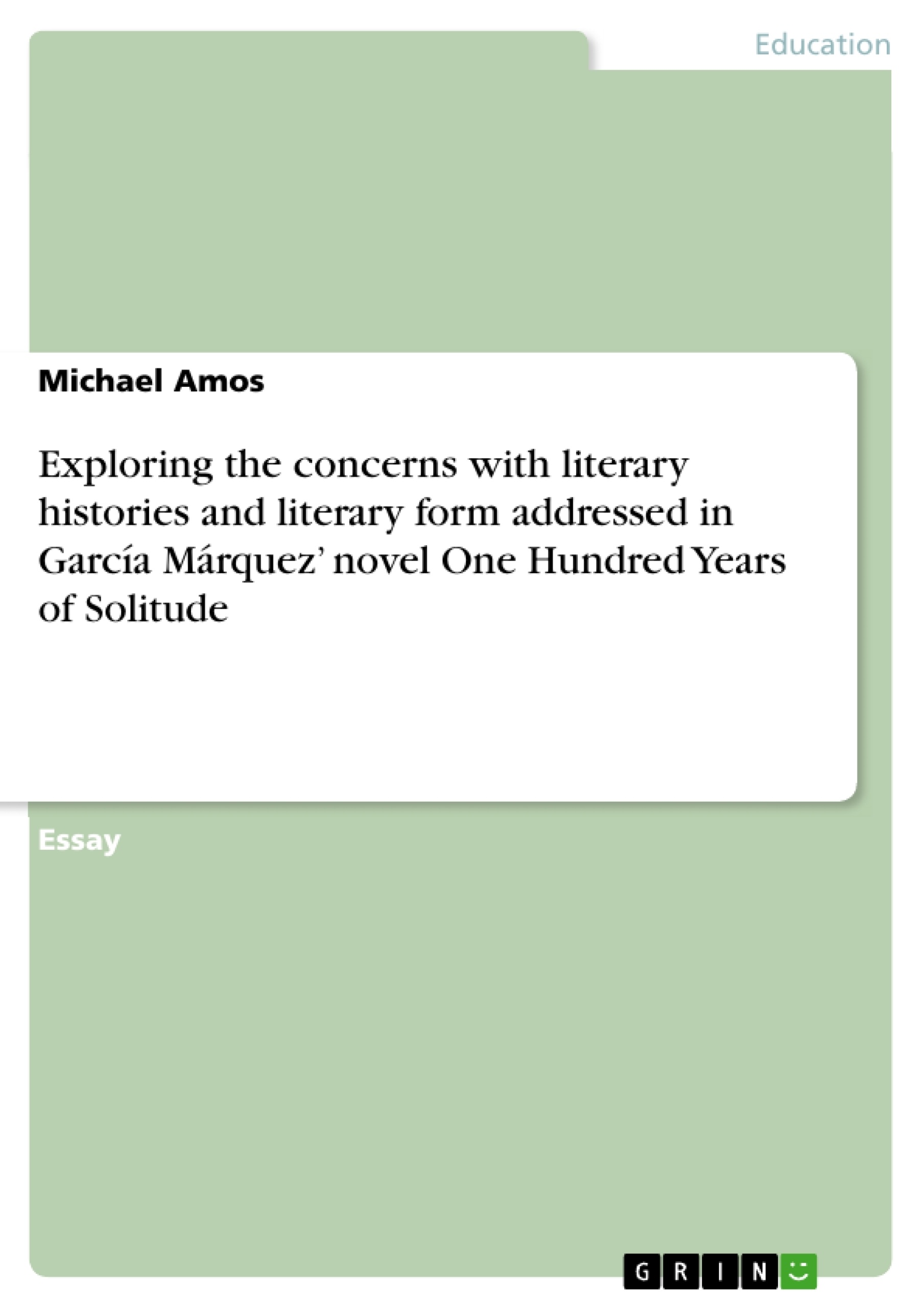This essay will explore García Márquez’ novel One Hundred Years of Solitude (1967) and the concerns it raises with literary histories and forms such as realism. I will be exploring the concerns aimed at literary histories which provide a version of reality that acts as a true representation while displaying only a version or subjective viewpoint of the world.
First, this essay will place the text within the context of the New Novel in Latin America as a response to Post-Colonialism, and then as a magical realist novel which comes to questions forms of representation of reality. Amaryll Chanady in her work on the territorialisation of the imaginary in Latin America, makes a clear distinction between the fantastic and magical realism: ‘the magical realist writer “does not need to justify the mysterious nature of events, as the writer of fantastic stories has to. In fantastic literature the supernatural invades the world ruled by reason”.’
In fact, it is its matter-of-fact narrative which describes in great detail the everyday lives of the people of Macondo, despite the interweaving of the fantastical that allows for the text to question the realist form. By analyzing Márquez’ distortion of time and space, in connection to Eva Aldea’s essay on magical realism and Deleuze, I will argue that the text has the ability to display signs not as representations of reality, but as real in and of themselves.
Through the analysis of the carnivalesque with David K. Danow and play and playfulness within the novel with Enrique A. Giordano, I will argue towards the text’s ability to embrace both the realist and the fantastic forms fully, embracing both within the limits of each other.
Finally, by exploring the character Melquiades I will argue that the narrative in the form of the manuscript, is a force which not only subvert the realist form but also transcends it. Eva Aldea argues that ‘Thus One Hundred Years of Solitude takes us through a kind of apprenticeship of signs, from the illusory referentiality of realism,’ to ‘the essential signs of art which reveal the structure of reality itself’ and therefore this essay will aim to analyze the novel’s signs in an attempt to capture the concerns it raises in connection to literary histories and forms.
Table of Contents
- Exploring the concerns with literary histories and/or literary form in García Márquez' novel One Hundred Years of Solitude
- The New Novel in Latin America
- Magical Realism and the Representation of Reality
- Distortion of Time and Space
- Carnivalesque and Playfulness
- The Manuscript as a Force
Objectives and Key Themes
This essay explores García Márquez' novel One Hundred Years of Solitude (1967) and its critique of literary histories and forms, particularly realism. It examines how the novel challenges traditional representations of reality by incorporating magical realism within a realist framework. The essay aims to analyze the text's signs, arguing that they are not merely representations but possess their own inherent reality.
- The New Novel in Latin America as a response to Post-Colonialism
- Magical realism as a challenge to traditional representations of reality
- The distortion of time and space in One Hundred Years of Solitude
- The carnivalesque and playfulness within the novel
- The role of the manuscript in subverting and transcending the realist form
Chapter Summaries
The essay begins by situating One Hundred Years of Solitude within the context of the Latin American New Novel, a movement that challenged traditional realism. The novel is then analyzed as a work of magical realism, exploring how it uses fantastical elements to question conventional representations of reality. The essay delves into the novel's distortion of time and space, arguing that these elements create a reality that is not simply representational but real in itself. The role of the carnivalesque and playfulness in the novel is also examined, demonstrating how these elements contribute to the text's embrace of both realism and the fantastic. Finally, the essay explores the character of Melquiades and the manuscript as a force that subverts and transcends the realist form.
Keywords
The essay explores key concepts such as magical realism, realism, Post-Colonialism, the New Novel, representation, the carnivalesque, playfulness, time, space, and the manuscript. It also examines the role of signs in literary texts and their relationship to reality. The essay draws on the work of various scholars, including Amaryll Chanady, Eva Aldea, Philip Swanson, Stephen M. Hart, Wen-chin Ouyang, Luis Leal, David K. Danow, and Rawdon Wilson.
- Quote paper
- English and Creative Writing Michael Amos (Author), 2016, Exploring the concerns with literary histories and literary form addressed in García Márquez’ novel One Hundred Years of Solitude, Munich, GRIN Verlag, https://www.grin.com/document/344533




